Question
 Lazarus changing color
Lazarus changing color
I've been perusing the internet for months, looking for answers to my questions and I am so happy to have stumbled across your site! This is an incredibly useful tool.
My husband and I recently adopted a 3 month old husky/boxer mix from a no-kill shelter (they had no clue what he was until my vet clued us in on his incredible conversation skills). He looks more husky than boxer, and has the personality of mostly a husky. He is a complete joy, and we are insanely in love with him and his constant talking and antics.
Lazarus was a dominant dog (he tried humping my husband on the first night home), but through the use reading up on alpha training, he now happily knows his place and barely tries to budge it. We are constant with the training, and he knows our food and play routines, and knows that we will keep him safe in our pack. We've taught him down, paw, roll-over, up and jump, and he has to do these tricks many times a day for treats and food. He was potty trained and knew sit when we got him. Your site has helped a lot with knowing that what we are doing with him is correct, so thank you for answering a huge majority of our questions.
When we first got Lazarus, he was brindle all over with just a line of black on his back. In the two months we've had him (Lazarus is now almost 5 months old) he has completely changed colors; he is now almost completely BLACK on his entire body with the exception of the white boxer chest/tummy and paws. Is this normal for huskies? I asked my vet, but she said that she had never seen such a dramatic transformation in ANY dog breed, especially in the short time we've owned him.
Also, he's got one white-blue, and one brown eye. People have asked if there is something wrong with the corresponding ear, or even the eye itself. Is there some old wive's tale that states something about how bi-colored eyed dogs have something wrong with them? It's so widespread, and the same questions again and again!
Lazarus plays very rough, and I know that that is normal for huskies. However, when he's making the incredibly scary "I'm killing you" noises when he's playing with other dogs, how far or long should we allow that to go on for? When he's playing with other dogs, it scares the begeezus out of the other dogs's owner and often it's seen as aggressive. Is it aggressive?
As I stated before, Lazarus was a dominant dog when we got him and through hard work he now knows his place. When we go to the dog park, however, he will openly attempt to hump other dogs. I assume that this is him trying to figure out what his standing is at the dog park, and I thwart it every chance I can--I grab him off by stating firmly, "NO" and then pin him down by his neck for a moment or two before letting him up. When I don't get to him on time, he's actually been attacked by the dog he's trying to hump, or attacks the other dog when it won't let him assert dominance. What I want to know is if it's detrimental for me to stop the dominant action so that he knows that I am the dominant one (and/or all other humans) and not him. Do I continue to force him to stop humping, or do I allow him so that he knows his standing amongst the other dogs? I will admit that since I've been thwarting his behavior, he has been humping less than he used to.
I realize this post is huge, but I do have one more question: I have been jogging with Lazarus, and we've just started riding a bike with him too. I've read other posts about how far/long should you allow your puppy to run or work out, but is it detrimental to my 4.5 month old puppy to be doing this with us? A person told me that I should wait until he was at least a year old, but I think I might go crazy if I have to wait that long to help him release his energy!
Thanks for helping,
Shauna
AnswerGreat to hear that this site is helping you out. Hopefully I can catch everything you asked in this post, but if not, feel free to write back if I missed anything!
First, the color change, while uncommon and not a husky-specific thing, is not unheard of at all. First, Sibes often go through dramatic changes in their facial mask as they age, often lightening significantly, although darker dogs sometimes go the other way (and darken). Second, dogs like the Soft Coated Wheaten Terrier go through dramatic color changes as they age (almost black to a light cream color is common). Interesting to have with a husky mix, but no concern.
Bi-colored eyes - common in Siberians, and of no real concern. In many other dogs, blue eyes can be an indicator of blindness or deafness. This is especially true in boxers (also white boxers have this issue). For Siberians, it is perfectly acceptable mainly because the breed does not suffer from this problem. I always tell people that most dogs, when born, have blue eyes. As they age, certain genetic triggers cause pigmentation to be released into the eye, turning it darker colors. Sibes have these triggers isolated to each eye, and they may or may not release the pigments equally. Not exactly true, but close enough for most people to understand what is going on. In Siberians, most bi-eyed dogs are just as normal as brown or blue-eyed dogs - which is to say they are crazy furballs, but no different.
As for aggressive play, it takes a trained ear and good understanding of dog behavior to figure out if the play is play or fighting, especially with Sibes who can love to play really rough. I would generally say if you don't think you can tell the difference, separate them and encourage easier play or removing the dog from the situation. If you ever get to a trainer or behaviorist and let them see the interaction, they often can tell easier. It all has to do with posturing, growls, tail position, ears, where the paws go, body position, etc. It's actually fairly complex, but once you get into it, you can read dogs pretty easily. If you want to get started in understanding it more, I would encourage reading up on wolf-pack behavior and mannerisms - they are mostly the same.
As for the humping - of course this is a sign of dominance to other dogs. You, as alpha, are completely in your right to tell him to stop what he's doing. The risk is that some dogs will take this as an opportunity to establish their dominance. "Oh, she's correcting him, I can attack, help out in the correction and establish myself over this other dog!" Honestly, it's an issue on either case because the dogs are all running around free. I know it's not possible for everyone, but that's why my dogs are allowed in the backyard to play, and we arrange "dog dates" for other dogs to play with them. Dog parks are too uncontrolled and too dangerous for me. Some dogs do great with it, but I'm not a big fan of them overall. I would say continue curbing that behavior, but be prepared to fend off other dogs who try to help out in any correction. Also, you shouldn't necessarily need to pin him. I would suggest a quick collar pop, a stern "NO!" and then maybe a command - like "Sit". That usually redirects the behavior, is less confrontational (in front of the other dogs) and reinforces training all at the same time.
As for running/biking with the dog: you are fine! Actually, the reason that many people suggest waiting til a year of age is because young bones and joints are growing and still settling in. SIbes usually don't have these problems, and they run and play quite hard from an early age. There is a chance, with a mix breed, that you may have some issues, but here's some good general guidelines:
Run as far as you want as long as the dog still wants to go further. If the dog begins to tire and slow, stop the run - you've gone too far. The idea is that anything the dog feels comfortable doing is probably fine for it, you just shouldn't push it at this age. You will notice the dog slow down after the initial start usually - and that's alright, but you just don't want the dog to slow and be pushed to keep going. Keep an eye on your dog as well - for injuries or soreness. Your dog may need a few days off for rest and recovery. Finally, don't do any pulling (sledding) exercises for a while. I generally recommend avoiding any pulling until about 9 months, and then, only with light weights on harness. No real pulling until they are over a year old and have built up to it.
Hope that helps! Feel free to write back if you have other questions and/or to let me know if I missed anything!
Thanks!
Marcus


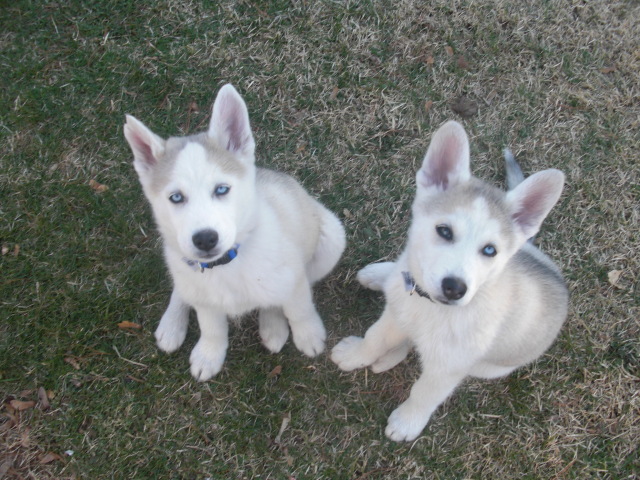 2 12 week old Husky brothers play/fighting
QuestionJasper & Sigmund
QUESTION: Two weeks
2 12 week old Husky brothers play/fighting
QuestionJasper & Sigmund
QUESTION: Two weeks
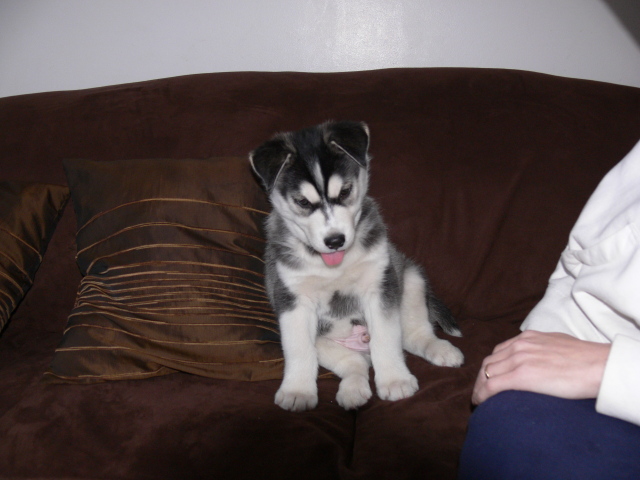 Husky Puppy Weight
Question
Zeus The Puppy
Hi we got Zeus at 6 1/2 weeks o
Husky Puppy Weight
Question
Zeus The Puppy
Hi we got Zeus at 6 1/2 weeks o
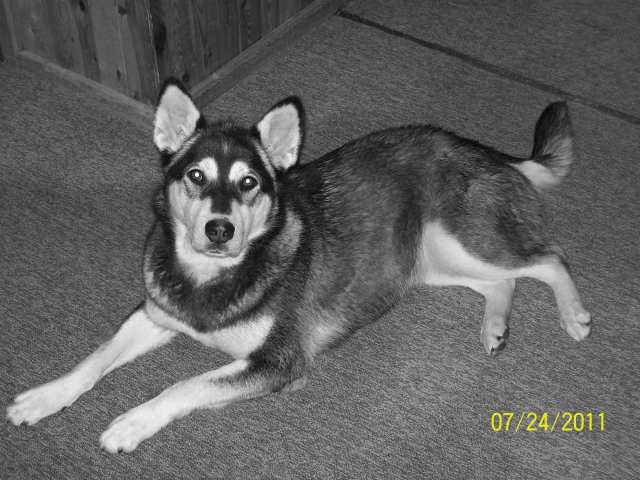 Pregnancy
Question
Diamond in black and w
Is it possible f
Pregnancy
Question
Diamond in black and w
Is it possible f
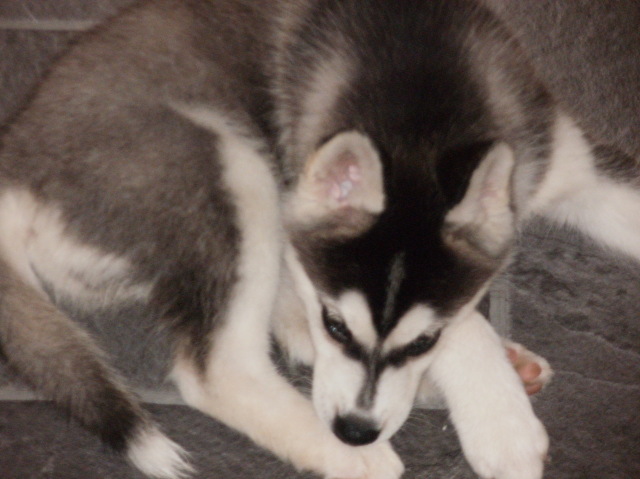 Bath Time
Question
Keiko
Hi we have a 14 week old Siberian named
Bath Time
Question
Keiko
Hi we have a 14 week old Siberian named
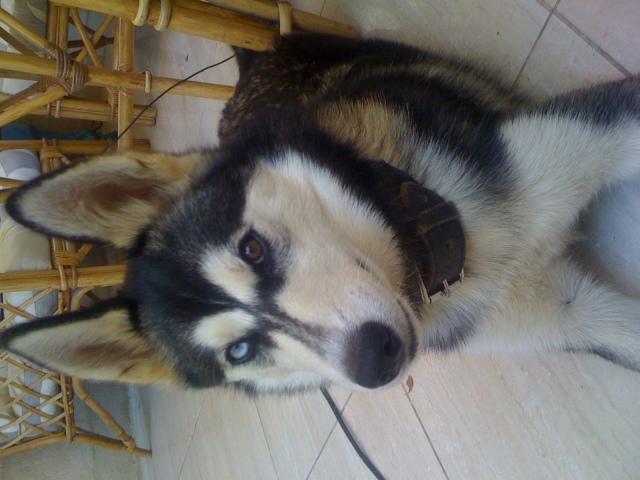 coming when called
QuestionQUESTION: hi, i have a female husky that is app
coming when called
QuestionQUESTION: hi, i have a female husky that is app